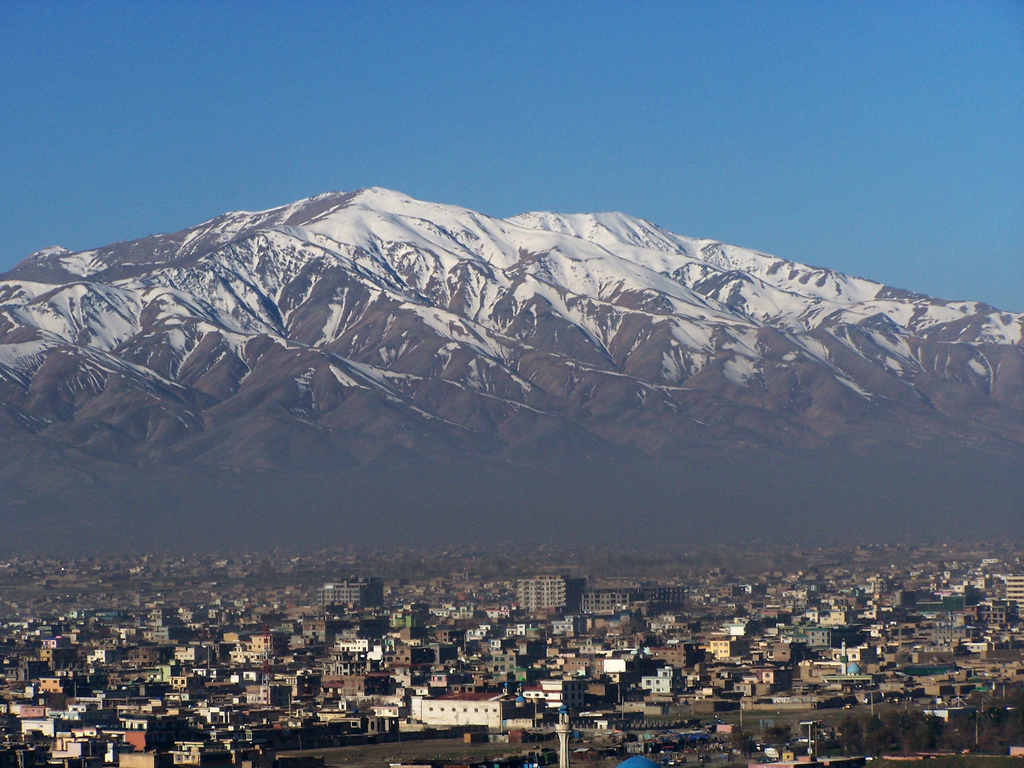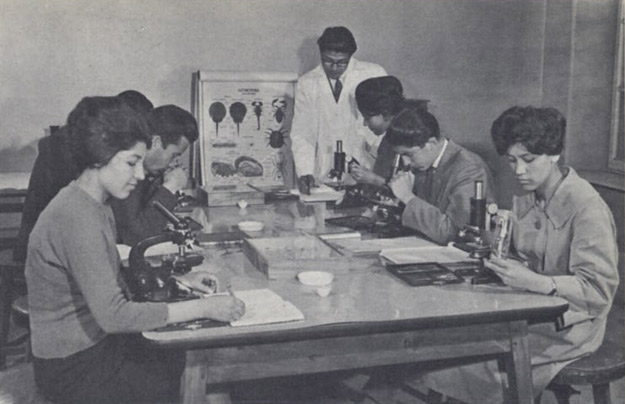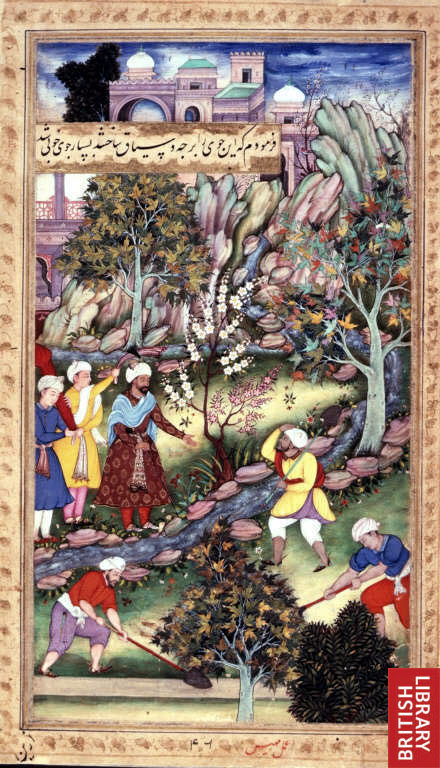|
Karte Char
Karte Char ( prs, کارته چهار), literally ''Fourth Quarter'', is a neighborhood in western Kabul, Afghanistan, part of District 3. It is located by the Sevom Aqrab Road that goes to Kote Sangi, and is located very close to Kabul University, Kabul Zoo, the Gardens of Babur and the Darulaman Road. It is a planned and urbanized locality but it suffered greatly during the 1990s civil war and was one of the city's worst-hit. Karte Seh is located south across the Chamcheh Mast river crossed by Pul-e Surkh (the ''Red Bridge''). Notable residents *Nur Muhammad Taraki Nur Muhammad Taraki (; 14 July 1917 – 9 October 1979) was an Afghan revolutionary communist politician, journalist and writer. He was a founding member of the People's Democratic Party of Afghanistan (PDPA) who served as its General Secret ... until 1979''Afghanistan's Two-Party Communism: Parcham and Khalq'' by Anthony Arnold References Neighborhoods of Kabul {{Kabul-geo-stub ... [...More Info...] [...Related Items...] OR: [Wikipedia] [Google] [Baidu] |
Neighborhoods Of Kabul
A neighbourhood (British English, Irish English, Australian English and Canadian English) or neighborhood (American English; see spelling differences) is a geographically localised community within a larger city, town, suburb or rural area, sometimes consisting of a single street and the buildings lining it. Neighbourhoods are often social communities with considerable face-to-face interaction among members. Researchers have not agreed on an exact definition, but the following may serve as a starting point: "Neighbourhood is generally defined spatially as a specific geographic area and functionally as a set of social networks. Neighbourhoods, then, are the spatial units in which face-to-face social interactions occur—the personal settings and situations where residents seek to realise common values, socialise youth, and maintain effective social control." Preindustrial cities In the words of the urban scholar Lewis Mumford, "Neighbourhoods, in some annoying, inchoate ... [...More Info...] [...Related Items...] OR: [Wikipedia] [Google] [Baidu] |
Provinces Of Afghanistan
Afghanistan is divided into 34 provinces (, '' wilåyat''). The provinces of Afghanistan are the primary administrative divisions. Each province encompasses a number of districts or usually over 1,000 villages. Provincial governors played a critical role in the reconstruction of the Afghan state following the creation of the new government under Hamid Karzai. According to international security scholar Dipali Mukhopadhyay, many of the provincial governors of the western-backed government were former warlords who were incorporated into the political system. Provinces of Afghanistan Regions of Afghanistan UN Regions Former provinces of Afghanistan During Afghanistan's history it had a number of provinces in it. It started out as just Kabul, Herat, Qandahar, and Balkh but the number of provinces increased and by 1880 the provinces consisted of Balkh, Herat, Qandahar, Ghazni, Jalalabad, and Kabul. * Southern Province – dissolved in 1964 to create Paktia Provinc ... [...More Info...] [...Related Items...] OR: [Wikipedia] [Google] [Baidu] |
Kabul Province
Kabul (Persian: ), situated in the east of the country, is one of the thirty-four provinces of Afghanistan. The capital of the province is Kabul city, which is also Afghanistan's capital and largest city. The population of the Kabul Province is over 5 million people as of 2020, of which over 85 percent live in urban areas. The current governor of the province is Qari Baryal. It borders the provinces of Parwan to the north, Kapisa to the north-east, Laghman to the east, Nangarhar to the south-east, Logar to the south, and Wardak to the west. Geography Kabul is located between Latitude 34-31' North and Longitude 69-12' East at an altitude of 1800 m (6000 feet) above sea level, which makes it one of the world's highest capital cities. Kabul is strategically situated in a valley surrounded by high mountains at crossroads of north-south and east-west trade routes. One million years ago the Kabul region was surrounded from south-east between Lowgar and Paghman Mountains ... [...More Info...] [...Related Items...] OR: [Wikipedia] [Google] [Baidu] |
Kabul
Kabul (; ps, , ; , ) is the capital and largest city of Afghanistan. Located in the eastern half of the country, it is also a municipality, forming part of the Kabul Province; it is administratively divided into 22 municipal districts. According to late 2022 estimates, the population of Kabul was 13.5 million people. In contemporary times, the city has served as Afghanistan's political, cultural, and economical centre, and rapid urbanisation has made Kabul the 75th-largest city in the world and the country's primate city. The modern-day city of Kabul is located high up in a narrow valley between the Hindu Kush, and is bounded by the Kabul River. At an elevation of , it is one of the highest capital cities in the world. Kabul is said to be over 3,500 years old, mentioned since at least the time of the Achaemenid Persian Empire. Located at a crossroads in Asia—roughly halfway between Istanbul, Turkey, in the west and Hanoi, Vietnam, in the east—it is situated in a stra ... [...More Info...] [...Related Items...] OR: [Wikipedia] [Google] [Baidu] |
Afghanistan
Afghanistan, officially the Islamic Emirate of Afghanistan,; prs, امارت اسلامی افغانستان is a landlocked country located at the crossroads of Central Asia and South Asia. Referred to as the Heart of Asia, it is bordered by Pakistan to the Durand Line, east and south, Iran to the Afghanistan–Iran border, west, Turkmenistan to the Afghanistan–Turkmenistan border, northwest, Uzbekistan to the Afghanistan–Uzbekistan border, north, Tajikistan to the Afghanistan–Tajikistan border, northeast, and China to the Afghanistan–China border, northeast and east. Occupying of land, the country is predominantly mountainous with plains Afghan Turkestan, in the north and Sistan Basin, the southwest, which are separated by the Hindu Kush mountain range. , Demographics of Afghanistan, its population is 40.2 million (officially estimated to be 32.9 million), composed mostly of ethnic Pashtuns, Tajiks, Hazaras, and Uzbeks. Kabul is the country's largest city and ser ... [...More Info...] [...Related Items...] OR: [Wikipedia] [Google] [Baidu] |
Kote Sangi
Kote Sangi ( prs, کوته سنگی) is a neighborhood and major intersection in western Kabul, Afghanistan, part of District 5. It is one of the city's most populated urban areas, located south of the Silo Road and west of Deh Bori and Kabul University. The roads link it to Afshar, Darulaman, Paghman and downtown Kabul. To the south-west are shanty areas nearby Dashte Barchi. In 2011 the country's first skyway A skyway, skybridge, skywalk, or sky walkway is an elevated type of pedway connecting two or more buildings in an urban area, or connecting elevated points within mountainous recreational zones. Urban skyways very often take the form of enclo ..., Kote Sangi Bridge, was built there which is 650 m long and 14 m high.http://www.afghanzariza.com/2014/11/04/kote-sangi-bridge-a-prime-example-of-mismanagement-and-corruption Its location is centered on Mirwais Maidan. See also * Neighborhoods of Kabul * Mirwais Maidan References Neighborhoods of Kabul ... [...More Info...] [...Related Items...] OR: [Wikipedia] [Google] [Baidu] |
Kabul University
Kabul University (KU; prs, دانشگاه کابل, translit= Dāneshgāh-e-Kābul; ps, د کابل پوهنتون, translit=Da Kābul Pohantūn) is one of the major and oldest institutions of higher education in Afghanistan. It is in the 3rd District of the capital Kabul, near the Ministry of Higher Education (Afghanistan), Ministry of Higher Education. It was founded in 1931 by Mohammed Nadir Shah, King Mohammed Nadir Shah, whose Prime Minister of Afghanistan, prime minister at the time was his younger brother, ''Sardar'' Mohammad Hashim Khan. Approximately 22,000 students attend Kabul University. In August 2021, before the 2021 Taliban offensive, Taliban takeover, nearly half were female. The university reopened in February 2022, with classes separated by sex but relatively few changes to the curriculum. History Early history Kabul University was established in 1932 during the reign of Mohammed Nadir Shah , King Mohammed Nadir Shah and during the government of Prime M ... [...More Info...] [...Related Items...] OR: [Wikipedia] [Google] [Baidu] |
Kabul Zoo
Kabul (; ps, , ; , ) is the capital and largest city of Afghanistan. Located in the eastern half of the country, it is also a municipality, forming part of the Kabul Province; it is administratively divided into 22 municipal districts. According to late 2022 estimates, the population of Kabul was 13.5 million people. In contemporary times, the city has served as Afghanistan's political, cultural, and economical centre, and rapid urbanisation has made Kabul the 75th-largest city in the world and the country's primate city. The modern-day city of Kabul is located high up in a narrow valley between the Hindu Kush, and is bounded by the Kabul River. At an elevation of , it is one of the highest capital cities in the world. Kabul is said to be over 3,500 years old, mentioned since at least the time of the Achaemenid Persian Empire. Located at a crossroads in Asia—roughly halfway between Istanbul, Turkey, in the west and Hanoi, Vietnam, in the east—it is situated in a stra ... [...More Info...] [...Related Items...] OR: [Wikipedia] [Google] [Baidu] |
Gardens Of Babur
The Garden of Babur (locally called Bagh-e Babur; fa, باغ بابر, ''bāġ-e bābur'') is a historic park in Kabul, Afghanistan, and also has the tomb of the first Mughal Empire, Mughal emperor Babur. The garden is thought to have been developed around 1528, when Babur gave orders for the construction of an "avenue garden" in Kabul, described in some detail in his memoirs, the ''Baburnama''. It was the tradition of Mughal princes to develop sites for recreation and pleasure during their lifetime and choose one of these as the last resting place. The site continued to be of significance to Babur's successors; Jahangir made a pilgrimage to the site in 1607, when he ordered that all gardens in Kabul be surrounded by walls, that a prayer platform be laid in front of Babur's grave, and an inscribed headstone placed at its head. During the visit of the Mughal Emperor Shah Jahan in 1638, a marble screen was erected around the tomb of Babur, and a mosque built on the terrace below. Th ... [...More Info...] [...Related Items...] OR: [Wikipedia] [Google] [Baidu] |
Darulaman
Darulaman ( fa, دارالامان) is a locality in the south-western fringes of Kabul, Afghanistan, forming part of District 6. The suburb was a planned city built in the 1920s under King Amanullah Khan. Amanullah Khan sought to turn Darulaman into a new modern capital city, and hired German companies and engineers to build roads, bridges and other infrastructure. The area is connected to Kabul some 16 km away via Darulaman Road, a long straight boulevard, which has been described by one analyst as "perhaps the most exquisite street of the capital Kabul". A narrow-gauge railway, the Kabul-Darulaman Tramway, was also built and operated through this boulevard. Numerous buildings and palaces were built there, including the Darul Aman Palace, National Museum of Afghanistan, and Tajbeg Palace. However, in 1929, Amanullah Khan abdicated after Habibullah Kalakani took over authority. As a result, his planned city was never fully completed and it never became a capital city. In sum ... [...More Info...] [...Related Items...] OR: [Wikipedia] [Google] [Baidu] |
Afghan Civil War (1992-96)
War in Afghanistan, Afghan war, or Afghan civil war may refer to: *Conquest of Afghanistan by Alexander the Great (330 BC – 327 BC) *Muslim conquests of Afghanistan (637–709) *Conquest of Afghanistan by the Mongol Empire (13th century), see also Mongol invasion of Central Asia (1216–1222) *Mughal conquests in Afghanistan (1526) * Afghan Civil War (1863–1869), a civil war between Sher Ali Khan and Mohammad Afzal Khan's faction after the death of Dost Mohammad Khan * Anglo−Afghan Wars (first involvement of the British Empire in Afghanistan via the British Raj) ** First Anglo−Afghan War (1839–1842) ** Second Anglo−Afghan War (1878–1880) ** Third Anglo−Afghan War (1919) *Panjdeh incident (1885), first major incursion into Afghanistan by the Russian Empire during the Great Game (1830–1907) with the United Kingdom of Britain and Ireland * First Afghan Civil War (1928–1929), revolts by the Shinwari and the Saqqawists, the latter of whom managed to take over Kabul ... [...More Info...] [...Related Items...] OR: [Wikipedia] [Google] [Baidu] |




